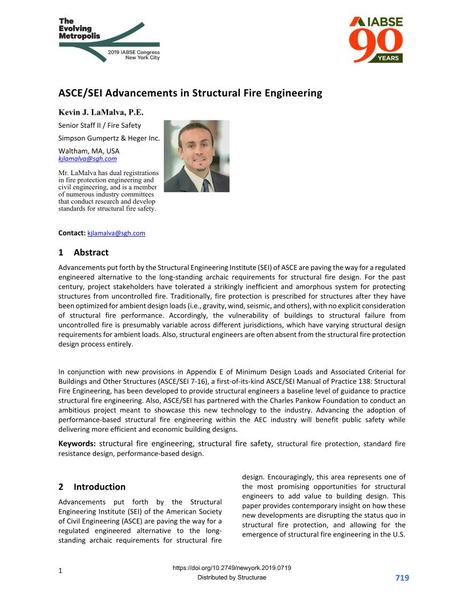|
Abstrait:
|
Advancements put forth by the Structural Engineering Institute (SEI) of ASCE are paving the way for a regulated engineered alternative to the long‐standing archaic requirements for structural fire design. For the past century, project stakeholders have tolerated a strikingly inefficient and amorphous system for protecting structures from uncontrolled fire. Traditionally, fire protection is prescribed for structures after they have been optimized for ambient design loads (i.e., gravity, wind, seismic, and others), with no explicit consideration of structural fire performance. Accordingly, the vulnerability of buildings to structural failure from uncontrolled fire is presumably variable across different jurisdictions, which have varying structural design requirements for ambient loads. Also, structural engineers are often absent from the structural fire protection design process entirely. In conjunction with new provisions in Appendix E of Minimum Design Loads and Associated Criterial for Buildings and Other Structures (ASCE/SEI 7‐16), a first‐of‐its‐kind ASCE/SEI Manual of Practice 138: Structural Fire Engineering, has been developed to provide structural engineers a baseline level of guidance to practice structural fire engineering. Also, ASCE/SEI has partnered with the Charles Pankow Foundation to conduct an ambitious project meant to showcase this new technology to the industry. Advancing the adoption of performance‐based structural fire engineering within the AEC industry will benefit public safety while delivering more efficient and economic building designs.
|

